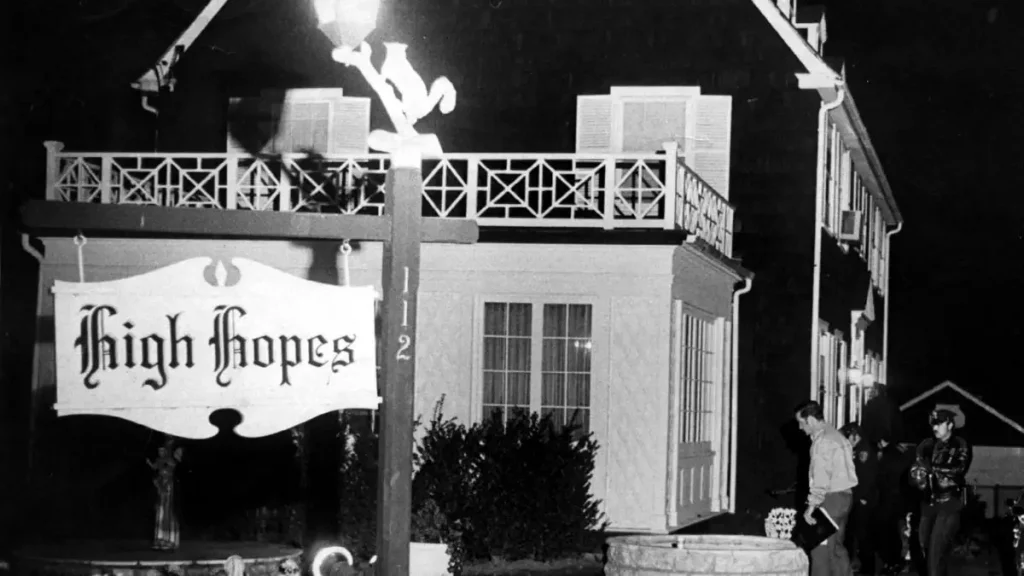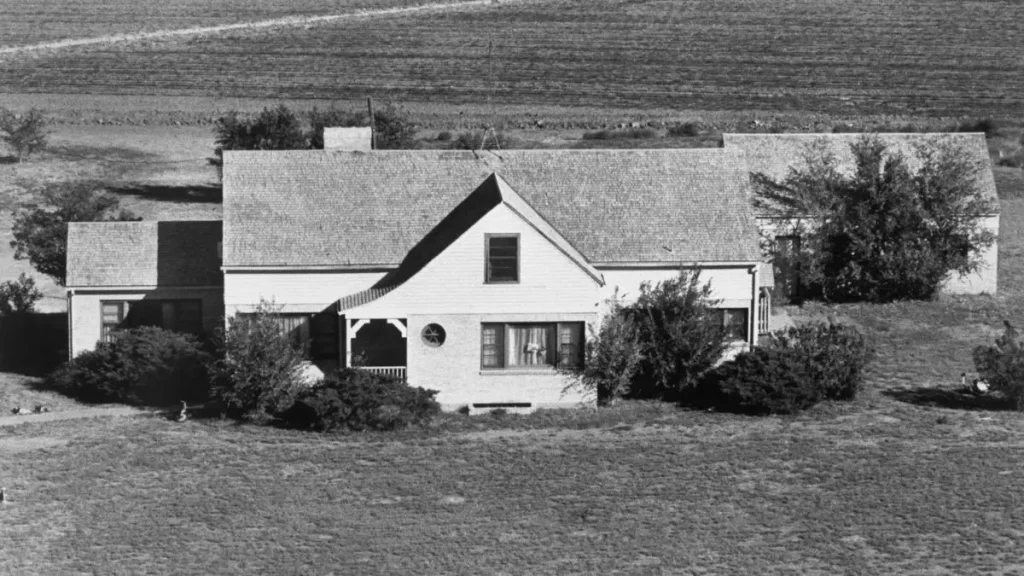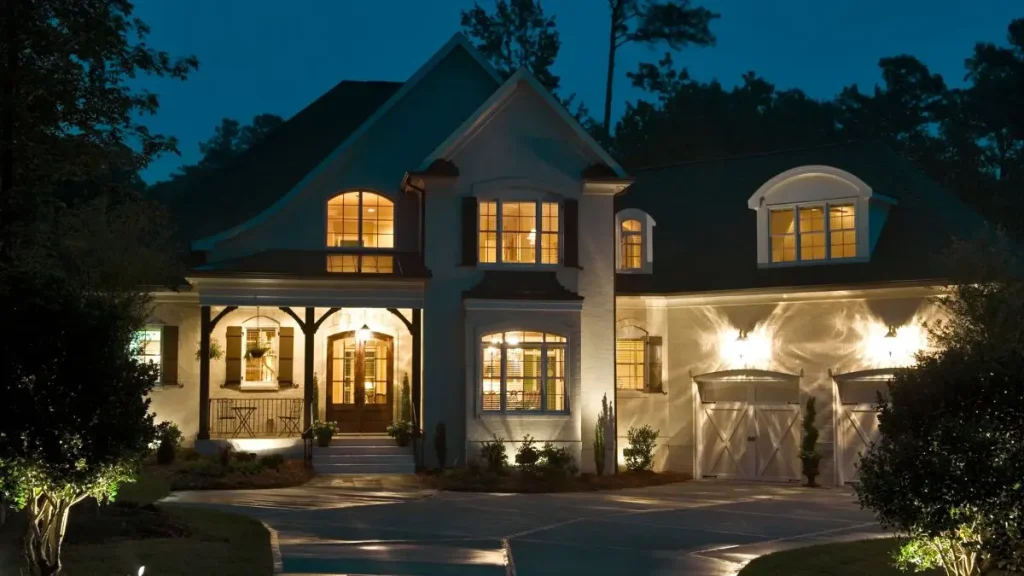6 Historic U.S. Homes Haunted by Infamous Murders
You know, some houses aren’t just homes—they’re silent witnesses to events so dark they haunt our imagination for decades. In the United States, a handful of homes have become infamous, not for their architecture or views, but for the tragedies that unfolded within their walls.
From axe murders in sleepy towns to shocking family slayings in wealthy neighborhoods, these houses tell stories that are as chilling as they are real.
As someone who’s spent years exploring true crime history, I’ve learned that these homes hold more than just memories—they reflect society, human behavior, and sometimes, the inexplicable.
In this article, I’ll take you through six of the most infamous American murder houses, sharing the stories behind the headlines, the facts that make them unforgettable, and why they continue to grip our collective imagination.
The Amityville Horror House – Amityville, New York

I still remember the first time I read about the Amityville Horror House—it’s one of those stories that sticks with you. Back in 1974, Ronald DeFeo Jr. shocked the nation by murdering his parents and four siblings in this Dutch Colonial home. Can you imagine a house where an entire family was wiped out in a single night? The tragedy itself is enough to send shivers down your spine.
A year later, the Lutz family moved in, hoping for a fresh start. But within days, they claimed to experience bizarre, terrifying events—doors slamming on their own, strange voices echoing through the halls, and even the unsettling feeling of unseen presences. Newspapers, TV shows, and eventually books and movies made this house a household name. Whether you believe in the supernatural or not, the cultural impact of this story is undeniable.
What’s even more striking is how the house has changed over the years. After renovations, it sold in 2017 for $605,000. Walking past it today, you might see just another suburban home—but the walls have seen horrors that few of us can imagine.
Visiting or learning about places like this isn’t just morbid curiosity. It’s about understanding human behavior, history, and how events ripple through culture in ways that last generations.
If you ever find yourself near Amityville, pause for a moment and think about the lives lost there. Would you dare to step inside a house with such a dark history.
If you’re curious why people still buy homes with such dark pasts, this guide dives into the psychology and stories behind these infamous properties.
The Lizzie Borden House – Fall River, Massachusetts
I’ve always been fascinated by cases that blur the line between fact and legend, and the Lizzie Borden House is a perfect example. In 1892, Andrew and Abby Borden were brutally murdered with an axe in their Fall River home. Their daughter, Lizzie Borden, was accused of the killings, and the trial captivated the entire nation. Even today, people debate whether she was guilty or wrongly accused.
The house itself has taken on a life of its own. According to Architectural Digest, it now operates as a bed and breakfast, welcoming visitors who want to tour the rooms where the infamous events took place—or even spend the night if they dare. Walking through those halls, you can’t help but imagine the tension and terror that once filled the air. It’s eerie, yet strangely compelling.
What makes this house stand out is how it transformed from a crime scene into a cultural touchstone. It’s not just about the murders; it’s about how a single event can shape a town’s identity, influence media narratives, and keep a story alive for over a century. Visiting or even reading about it gives you a firsthand sense of history—and a reminder of how real-life events can feel more chilling than fiction.
If you could spend a night in a house with such a dark past, would you do it? Or would you stay safely outside, imagining the history behind the walls?
The Clutter Family Farmhouse – Holcomb, Kansas

I’ll never forget learning about the Clutter family murders—it’s one of those stories that feels like it should be fiction, yet it really happened. In 1959, the Clutter family was brutally killed in their Holcomb, Kansas farmhouse by Richard Hickock and Perry Smith as per Wikipedia. Four lives taken in one night, in a quiet town that had never seen anything like it.
Truman Capote’s In Cold Blood brought this case to national attention, but even beyond the book, the tragedy left a lasting imprint. Walking past the farmhouse today—or reading about it—you can sense the weight of what happened there. It’s more than a crime scene; it’s a place that forces us to confront the darkness humans are capable of.
Learning about it makes me pause and reflect: sometimes horror isn’t in the supernatural, it’s right here in reality. Visiting—or even just exploring the story—helps you understand both human nature and the way communities are changed forever by violence.
If you could visit the Clutter farmhouse, would you want to experience its history firsthand, or would it feel too heavy?
While exploring haunted or infamous homes, I’ve found it handy to connect with other enthusiasts who share rare stories, tips, and updates—sometimes discussions in private groups can reveal details not widely covered in articles or books.
The Villisca Axe Murder House – Villisca, Iowa
The Villisca Axe Murder House is one of those cases that sticks with you because it remains unsolved even today. Wikipedia reports that in 1912, eight people—including six children—were murdered with an axe in this small Iowa home. The sheer brutality and the unanswered questions make it a chilling story.
What fascinates me is how the house has been preserved as a historical site. You can visit, take a guided tour, or even stay overnight—though many people report feeling uneasy or experiencing unexplained phenomena. It’s not just a story in a book; it’s a real place where tragedy unfolded, and the echoes of that night linger in the air.
Cases like this make you think deeply about human nature, justice, and how certain events can haunt a place for over a century. The Villisca house reminds me that history isn’t just dates and facts—it’s lived experience, and some places carry that weight forever.
For anyone researching a house’s hidden history before buying, these simple investigative steps can be a lifesaver.
The Menendez Brothers’ Mansion – Beverly Hills, California

I’ll admit, the Menendez case always gave me chills. In 1989, Lyle and Erik Menendez brutally murdered their wealthy parents in their Beverly Hills mansion. The story shocked America—not just because of the crime itself, but because it unfolded in a neighborhood associated with glamour and privilege.
Walking—or even just imagining—those halls, it’s hard to reconcile the opulence of the home with the horror that occurred inside. News outlets covered the trial nonstop, and ABC’s timeline of the events highlights how the case gripped the public for years.
What stands out to me is how this case sparked conversations about family dynamics, abuse, and wealth. The mansion itself became more than just a building; it’s a symbol of the dark secrets that can exist behind closed doors. Even today, people are drawn to the story, fascinated by how appearances can hide such tragic realities.
And to avoid legal issues when a house has a tragic history, this article explains why disclosure is critical in certain states.
The Borden House – Fall River, Massachusetts
When it comes to true crime, few cases are as iconic as the Borden murders. In 1892, Andrew and Abby Borden were killed with an axe in their own home, leading to Lizzie Borden’s infamous trial.
The house is now a museum, offering tours that let visitors see where the tragic events unfolded. Walking through it, you can almost feel the tension and fear that once filled the air. What I find fascinating is how the house transforms from a crime scene into a cultural artifact—it allows us to reflect on justice, suspicion, and how society processes shocking events.
If you could step inside this house today, would you focus on its history or let your imagination wander to the fateful day of the murders?
Final Thoughts
After walking through these infamous American homes, it’s hard not to feel a mix of fascination and unease. Each house holds stories of tragedy, mystery, and human darkness, yet they also teach us something profound about society, human behavior, and history. These walls have witnessed events that are almost unimaginable, and they continue to draw our curiosity—sometimes for the thrill, sometimes for understanding, and sometimes just to remember.
What strikes me most is how these homes transform over time. Some become museums, others remain private properties, and a few gain a reputation for the paranormal. Yet no matter their current state, they all serve as reminders that real-life horror can be far more compelling—and unsettling—than fiction.
Visiting, reading about, or simply imagining these houses isn’t just morbid curiosity. It’s a way to connect with history, confront human nature, and reflect on the fragility of life. For me, the lesson is clear: behind every facade, there are stories waiting to be told, and sometimes, they’re darker than we ever imagined.
Which of these infamous homes would you be brave enough to visit? Or would you prefer to explore their stories from a safe distance? Share your thoughts—I’d love to hear which house left the deepest impression on you.
If you’re fascinated by homes with dark histories, you might also enjoy exploring more stories on our website Build Like New.
Disclaimer: The information in this article is based on historical records, credible sources, and media reports. Some details may be subject to interpretation or ongoing investigations. This content is for informational purposes and not intended as sensationalism.


